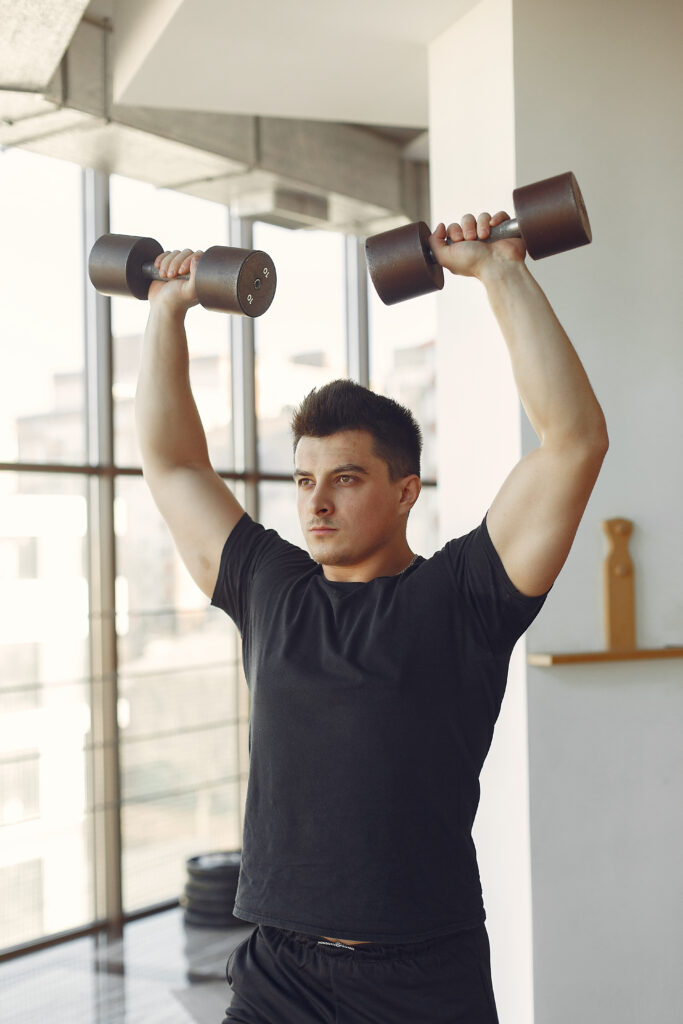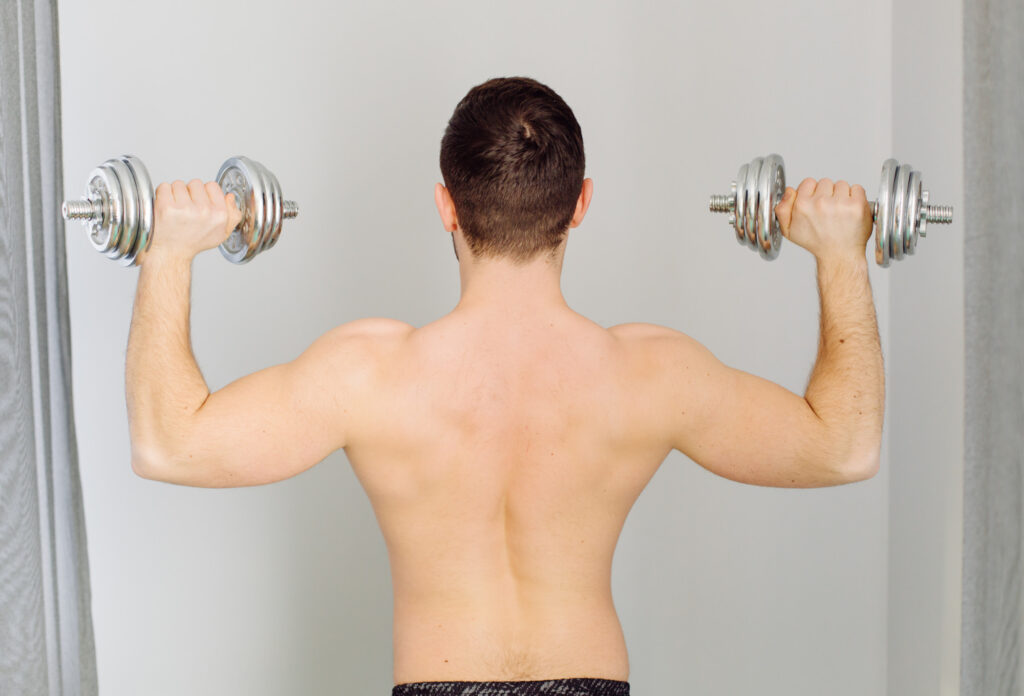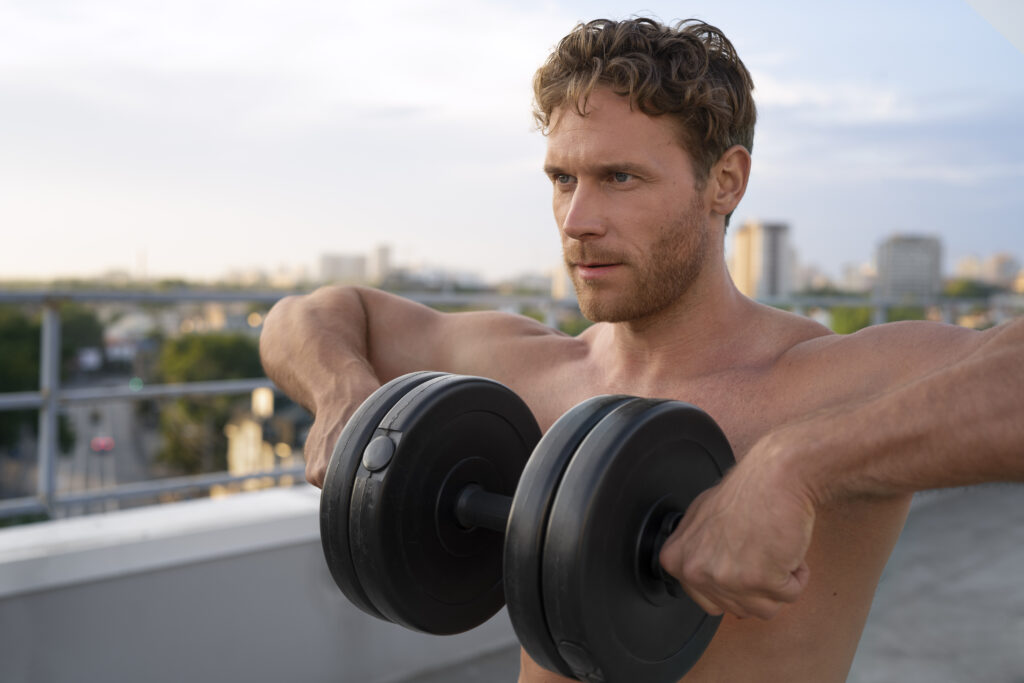
The Ultimate Strength & Definition Inspirational Dumbbell Shoulder Workout Ideas
A shoulder workout is an integral part of working out full body. Well developed broad shoulders not only are important to the way the upper body looks they also help to hold a more functional posture, reduce the risk of injury and possibly even increase functional strength. Shoulder exercises with dumbbells is a very versatile and effective, without fear of saying that you could not find in any training program. They also offer a full range of motion, activate stabilizer muscles and enable you to target all three heads of the deltoids the anterior (front), lateral (middle) and posterior (rear) deltoids. So in this article, we will be walking through the best dumbbell shoulder exercises, the benefits and how to add them into your lifting regimen for bigger, stronger and more sculpted shoulders.
Dumbbell Shoulder Exercises: How to do?
So here’s why you may choose dumbbells for your shoulders to machine or free weights: dumbbell shoulder exercises
As a result, modal summons greater Prevention of ranges of motion is applied with dumbbells comparing with barbells which consequently equals to more shoulders executing sets. And these enable our muscle to build stronger through movement spectra that are fettered to a concrete exercise apparatus.
Muscle Balance: “You’re letting each arm work independently. It helps keep away muscle imbalances you will be able to also work one hand without loading the different side, which you cheap to do with a regular dumbbell.
Taking it one step further, dumbbell movements are inherently more functional they closely mimic the same movements we do in life/real life That carries over into more shoulder stability in life and other sports.
Dumbbells also don’t promote as much stability for the shoulder and the core, making them a better implement for conditioning stabilizer muscles and possibly lowering the risk of injury to the joints and improving overall joint health.
Finally For the center exercises body weight work out balls add to the lift you use on any activity start can cure easily and in a matter of seconds changing in, and with the free weight you can go from heavyweight from a lot lower weights. They’re also portable, and of relatively easy access, so they can shine for home-training routines or tighter quarters.
The only dumbbell shoulder workout you will ever need
With that, let’s get into the best dumbbell shoulder exercises to build strong, balanced shoulders. This works all three heads of the deltoid and will improve overall shoulder development .
Dumbbell Shoulder Press
One of the main shoulder exercises primarily emphasize the anterior and lateral deltoid as well as the upper pec and triceps involvement to a lesser degree is the dumbbell shoulder press (overhead press).
HOW TO DO A DUMBBELL SHOULDER PRESS:
Hold a dumbbell in each hand and stand or sit with your feet from shoulder-width apart.
Except now the dumbbells were raised to shoulder level, elbows bent at 90 degrees, palms facing forward.
Press the dumbbells overhead, fully extending your elbows (but do not lock out the arms).
Lower the dumbbells back to shoulder-height controlled, back straight and core tight the entire time.
Tips:
Urine cannot catch up, take the elbow joint and set the height, to save the son amount to the shoulder joint to save the load, does not have such function.
Engage your core so that you won’t collapse into too much lordosis (small curve in lower back).
Lateral Raises
One of them being lateral raises, which can be a decent isolation type of exercise that primarily targets the lateral (middle) head of the deltoids, that correlate with shoulder width. It helps create length in the shoulders and strength.
How to Do a Lateral Raise:
“Stand with your feet hip-width distance apart, with a dumbbell in each hand at your sides, palms up towards your body.
Bend the elbows slightly, and raise the weights out to the side as high as the arms can go until they’re parallel to the ground.
Lower them back down slowly and controlled.
Instead of spiraling your body like a butterfly, shrug yourself over the repetition.
Tips:
And not too higher which is going to put more stress on shoulder joints.
Like: traversing the mounds of snow on this rhythm that swings with dynamic precision to any austere metronome tickings, no momentum gained to get the sheer bulk to budge.
Front Raises

Front raises target the anterior (front) deltoids in particular, making them useful for if you want to pack a little extra volume and definition to your shoulder (opens in new tab). Do this with both arms together and/or by alternating striking one side at a time.
How to Perform Front Raises:
Start with a dumbbell in each hand at your sides, your feet hip-width apart and your palms facing your thighs.
With your arms extended, press the dumbbells straight overhead in front of you until your arms are parallel with the floor.
Dumbbells are then lowered to start position at a steady, controlled pace. 1154며
Tips:
This will limit including overloading and overload the shoulder mechanism, which they do not lift weights above shoulder level.
Your core isn’t going to give you the motion to swing, but it helps resist when you need it.
Arnold Press
How to Do It: The Arnold press is a simple-to-perform variation on the dumbbell shoulder press, putting a spin on the exercise. This exercise hits all three heads of the deltoids but puts extra focus on the anterior deltoids.
How to Do the Arnold Press:
Stand or sit with your feet shoulder-width apart, a dumbbell in each of your hands, palms facing your shoulders.
When you press overhead, rotate to palms facing forward (toward the front).
To descend, reverse the maneuver, wrapping palms toward shoulders.
Slowly lower back to the starting position.
Tips:
It’ll also help your shoulder muscles have something to do for as much of the run as you can manage.
And that volume can generate a mechanical position that’s favorable for the legs to drive, but can also create positions where the back could be in danger of hitting a bigger arch, if the core does not get tight and fold up, in the press.
Bent-Over Reverse Fly
Your wild cards for this position are target-bending reverse fly, potentially the simplest muscle burner for activating muscles that are afterthoughts in your average one-thought-fits-all shoulder workout. Most gym-goers have large front deltoids and inadequate rear deltoids and the training and growth of the rear deltoids should not only be crucial to shoulder balance but also injury prevention.
How To Do A Bent-Over Reverse Fly:
Bodyweight or dumbbell RDL: Stand with feet shoulder-width apart, hinge at your hips and lower your torso to 45 degrees.
Stooped with a dumbbell in each hand, arms straight down, beneath you, palms facing in.
Pull the dumbbells out to the sides, squeezing the shoulder blades back together, until both arms are up at shoulder height.
Read more what that new guidance tells you. “Extremely slowly lower the dumbbells back to the floor.
Tips:
You always keep a little bit of a bend in the elbow so that you don’t get a lot of muscle synchrony that might actually strain the body through the muscles and so the shoulders can still actually move, so you don’t stop the shoulders from doing these actions as well.
Do not keep on the catches, which mean focuses, your back delt and upper back should contact the floor in and out of the direction amid the move, no blast!
Upright Row
The upright row also targets the deltoids (lateral head & anterior head), the latter being a benefit of doing. And since it’s isometric traps and biceps, you could even consider it a compound movement building overall shoulder strength.
How to Do the Upright Row:
Stand with your feet shoulder-width apart, a dumbbell in each hand at your sides, pal palms facing your thighs.
Keep your pressing angle and press the dumbbells straight up toward your chin with your elbows slightly above your wrists.
Lower the dumbbells back to the beginning position slowly.
Tips:
As with the prior exercise, the dumbbells should remain close to the body so that the deltoids are engaged.
And only when it giving and don t pulling or taking an excess amount out as it can create maintain stiff in shoulder joints.
Dumbbell Shrugs
Primarily dumbbell shrugs are a trap training exercise, however they can also be one means of ancillary movement to obtain a bigger and appearance as in the upper works can be to enhance upper body and shoulder fortitude, which in terms might lead to gross gains in mass in a series of muscles places, with respect to increased shoulder mass.
How to Do Dumbbell Shrugs:
Begin: A dumbbell in one hand or the other, which is placed next to the body on either side, with palms facing forward.
Shrug — for your ears, at end-range of motion to activate your traps.
Drop the dumb bells, and return to the beginning.
Tips:
That all the shoulders you are doing is more tension.
You want that shoulder to come straight up, so that you’re not swinging your shoulder forward or back.
Work It: The Dumbbell Shoulder Workout
One consideration when programming dumbbell shoulder movements is volume (sets and reps), but a second is what is used. Heavy shoulder specific dumbbell routine For example:
Warm-Up (5–10 min): Maybe some light cardio, then shoulder movement arms circles or band pull-apart can be nice here, etc.
Dumbbell Shoulder Press — 3 x 8–12 reps
Lateral Raises — 3 sets 12–15 reps
Arnold Press – 3 x 8-12 reps
THREE SETS: Bent Over Reverse Fly — 10 to 12 reps.
Upright Row — 3 x 10−12
After that Cool Down and Stretch — 5–10 mins shoulders, traps and chest

Conclusion
Dumbbell shoulder moves are great for packing on the strength, stability and definition already built into the shoulders. So simply doing the above shoulder exercises, is quite a time-efficient way of achieving this, if your goal is to build a little more strength/muscle endurance/ muscle quality in the shoulder. A dumbbell allows you to strategize using progressive overload and range of motion principles that will help you build a finely muscled, beautiful shoulder.
